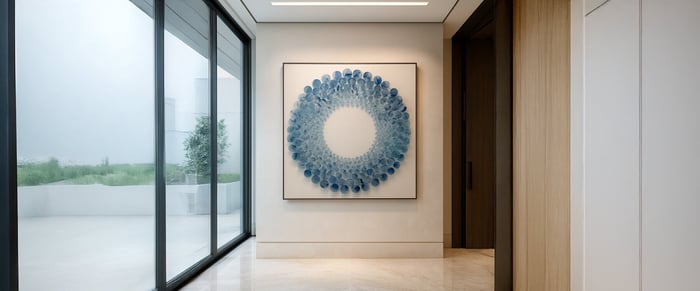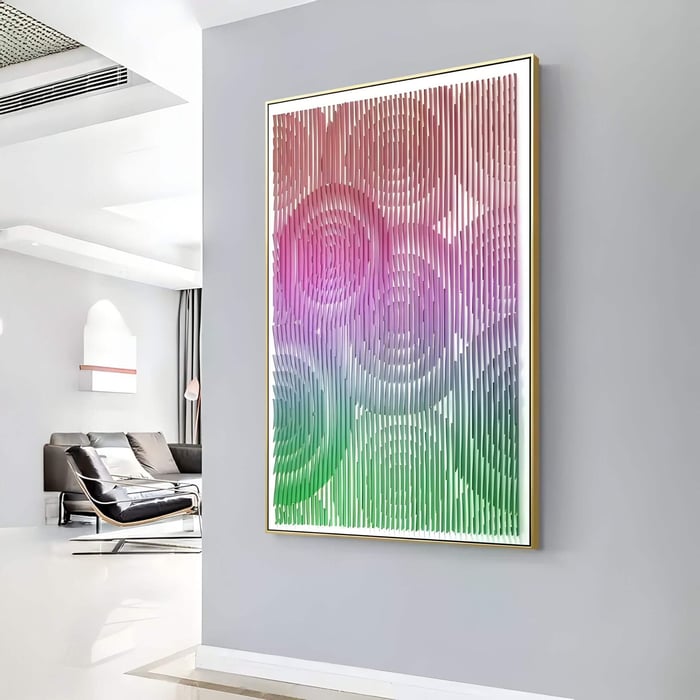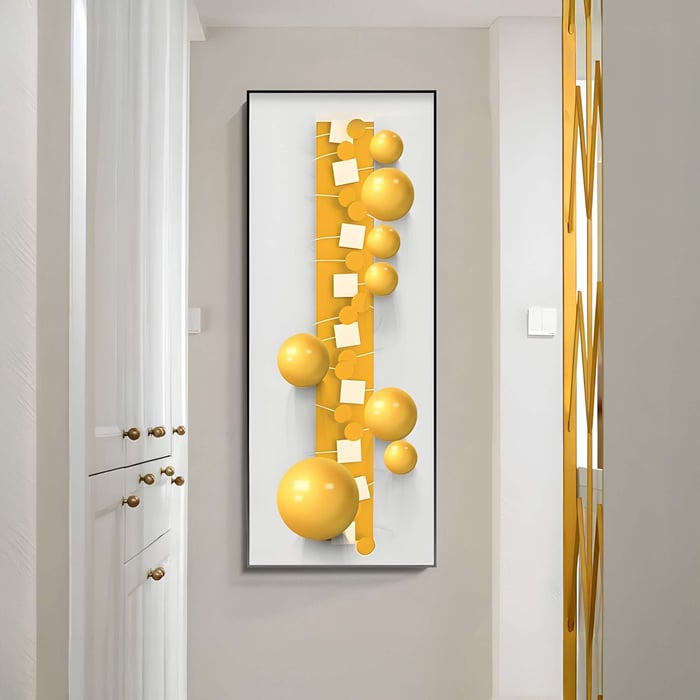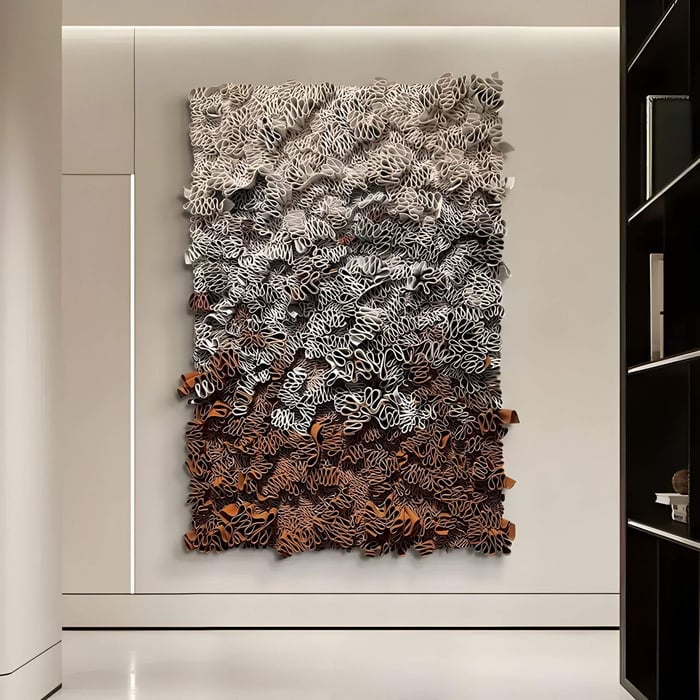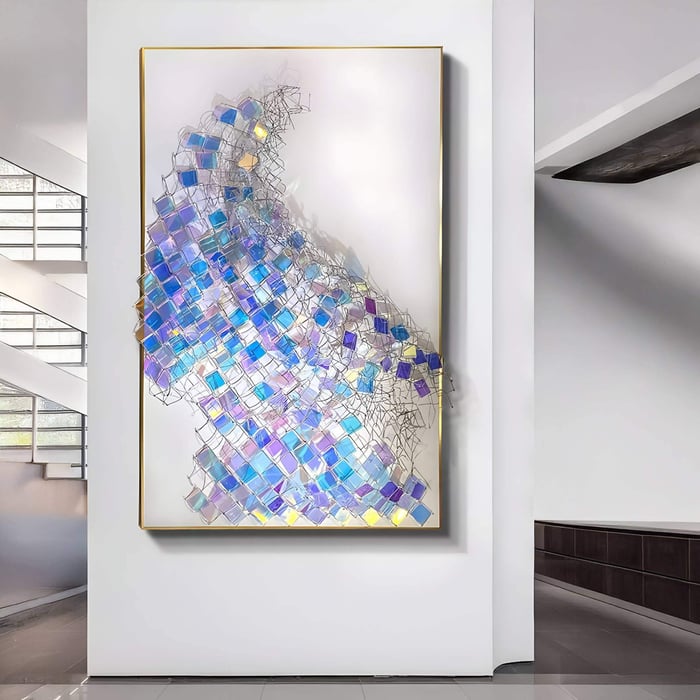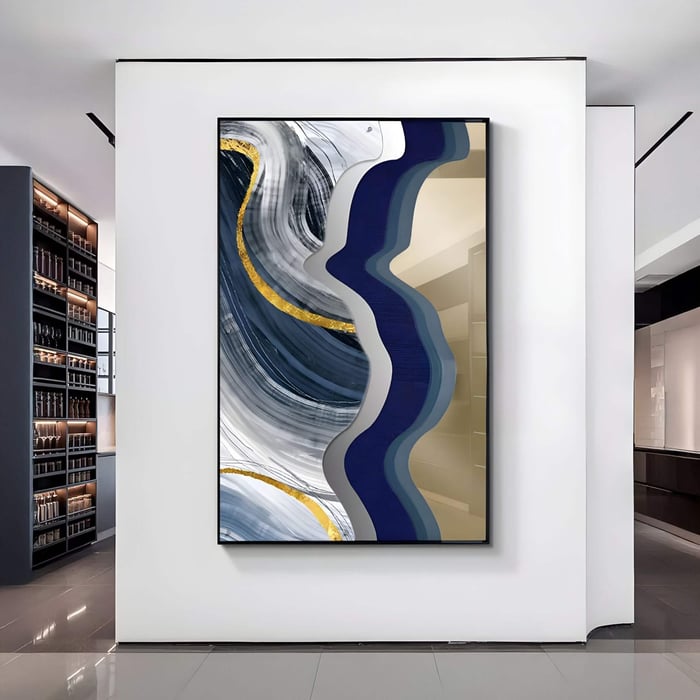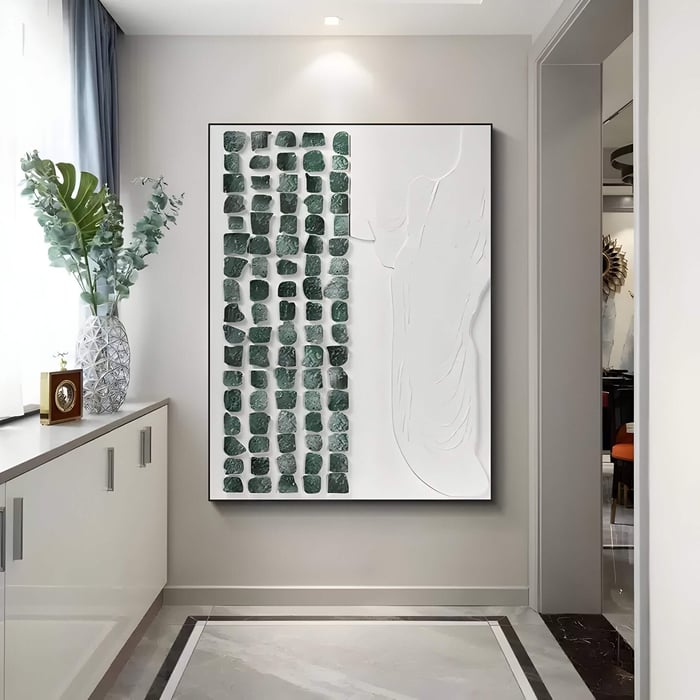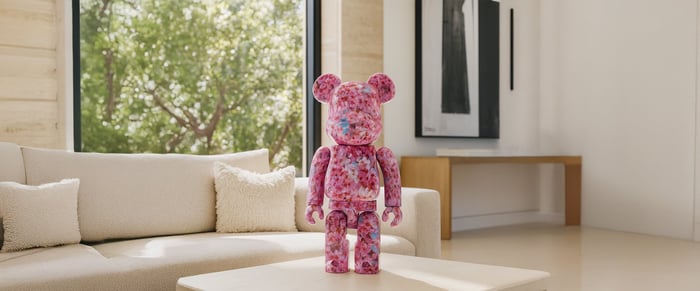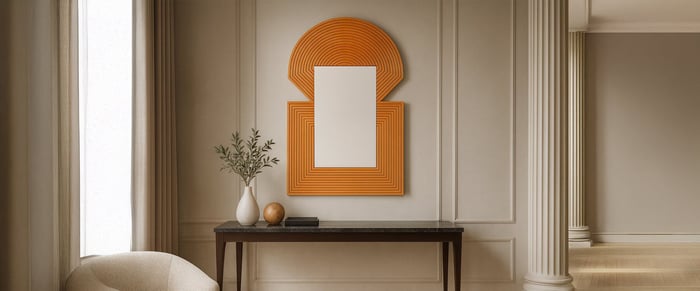Table of Contents
- Introduction - Hallway Art That Works: Defining Your Transitional Space
- Understanding Hallway Dynamics: Narrow, Wide, or Open?
- Art Rules for Narrow Hallways
- Ideal Art Approaches for Wide Hallways
- Art Ideas for Open, Airy Hallways
- Universal Principles for All Hallway Types
- Care & Longevity of Hallway Art
- Conclusion - Hallway Art That Truly Works
- FAQs
Introduction - Hallway Art That Works: Defining Your Transitional Space
Hallways are the unsung heroes of a home: they connect rooms, frame first impressions, and set the tone for everything beyond. Yet they’re often left blank. Thoughtfully chosen hallway art can change that in an instant, visually widening passages, adding rhythm to long runs, or creating a calm pause between busy zones. Beyond pretty pictures, the right pieces act like architecture: they organise sightlines, pull you forward, and anchor key moments such as doorways and turnings.
This guide breaks down how to select paintings that work with your layout - narrow, wide, or open, without overpowering circulation or compromising comfort. You’ll learn proportion rules that scale beautifully, placement tricks that keep walkways clear, lighting that flatters colour and texture, and simple care tips to help your collection age gracefully. Ready to make your corridor more than a corridor? Let’s begin.
Understanding Hallway Dynamics: Narrow, Wide, or Open?
Every hallway layout comes with unique challenges and opportunities. Recognising these is the first step to choosing effective hallway wall paintings.
Narrow: Cosy and efficient, but they can feel tight if art is too bulky or hung too high. The goal is to elongate sightlines, add vertical lift, and reflect light.
Wide: Luxurious to walk through, but easy to underdress. Large, confident gestures are essential; otherwise the space reads as empty.
Open: Think gallery-like halls that merge with living or dining zones. These need confident focal anchors so they don’t feel like leftover space.
Measure both width and walking clearance (ideally keep at least 90 cm clear) before choosing formats or frames. Consider how the hallway connects rooms: do you want art to speed up the journey (dynamic lines and series) or slow it down (quiet, contemplative pieces)? When form, function, and flow align, your corridor becomes a designed destination rather than a pass-through.
Art Rules for Narrow Hallways
Narrow corridors demand thoughtful choices. The wrong painting can overwhelm, but the right approach can add height, depth, and a sense of flow.
Directional canvases: Long, slim artworks or horizontal pieces emphasise movement, drawing the eye down the hallway and making it appear longer.
Vertical lift: Tall, slender vertical canvas art paintings add height and balance low ceilings. Keep frame profiles slim so they don’t encroach into the walkway.
Reflective surfaces: Mirrored or glossy finishes bounce illumination and visually widen the corridor. Use sparingly to avoid glare.
Gallery walls: A series of small, cohesive artworks, such as monochrome prints arranged in a grid, adds rhythm and interest without crowding.
Textured & Tactile nuance: Subtle reliefs or raised elements add dimension without protruding too far, ensuring safe passage while giving tactile charm.
Spacing tips: keep artwork centred at 145–155 cm from the floor (eye level). Leave 5–7 cm between frames in a series to maintain visual breathing room. Lighting is crucial: slimline downlights or concealed track heads set at 30° will highlight the surface without flattening colour. Finally, if the run is very long, introduce a “rest”, a single larger piece midway, to create a moment of pause before the route continues.
Ideal Art Approaches for Wide Hallways
Wide hallways offer more freedom but require balance. Bare walls can feel like missed opportunities, while cluttered displays overwhelm.
Go big: Choose an oversized hallway art statement that fills the wall’s central third to half. Large canvases establish scale and stop the space feeling cavernous.
The rhythm method: If one hero piece isn’t right, try a linear series of medium works at consistent height. Repeat frames or palettes to tie the story together, an elegant form of wide corridor decor.
Multi-panel narratives: Triptychs and diptychs create width-spanning continuity. For something bolder, explore painted or papered hallway mural ideas that introduce soft arches, abstract fields, or landscape bands.
Shelf-and-lean: Floating ledges let you layer framed art, small sculptures, and plants. This adds depth without permanent holes and is perfect for evolving displays.
Design note: Larger halls can handle broader frames and deeper profiles. If the corridor connects key rooms, position a statement piece so it aligns with a sightline from an adjacent space (for instance, visible from the living room doorway). Lighting can be more theatrical here: picture lights, twin sconces, or a run of adjustable heads build a gallery feel and highlight texture.
Art Ideas for Open, Airy Hallways
Expansive hallways are common in open-plan homes and offices. They call for strong visual anchors.
Anchors, not clutter: One large canvas or a cohesive pair can ground an expanse far better than many small frames. This is a great spot for calm colour fields or abstract art that won’t compete with busy living areas.
Bring in nature: Landscapes, botanicals, and nature-inspired organic art soften big volumes and bridge indoor–outdoor views. Choose palettes that echo flooring, timber tones, or nearby planting.
Rotating art collections: For long halls, changing pieces seasonally keeps the space dynamic and engaging.
Sculpture integration: Pedestals or consoles topped with small artworks or sculptures add layers of interest. Pair with entrance hallway paintings to create continuity from foyer to interior.
Styling tip: Open zones often have skylights or window spill: place art to capture sidelight (which emphasises texture) rather than direct glare. If acoustics are lively, fabric-wrapped panels or framed textiles can double as art and softening material, enhancing comfort as people move through.
Universal Principles for All Hallway Types
While proportions differ, some principles work universally across hallway designs:
Lighting first: Purposeful hallway art lighting is non-negotiable. Aim fittings at 30° to prevent harsh reflections and to reveal brush texture or canvas grain. Dimmer control helps shift from daytime clarity to evening mood.
Colour strategy: Let art either complement wall tones (calming continuity) or deliberately contrast them (drama, focus). Echo one colour from the piece in a runner or console accessory.
Proportion & spacing: As a baseline, centre art at eye level (145–155 cm). Keep consistent margins from door frames and switches so the display reads intentional.
Safety & clearance: In busy family homes, choose low-profile frames and hang securely; avoid protruding corners along tight turns.
Functional styling: Complement art with hallway runners, console tables, or mirrors to create a cohesive look.
These rules ensure hallway mural ideas and paintings feel intentional rather than random.
Care & Longevity of Hallway Art
Hallways see heavy foot traffic, so durability matters.
Material choice: Opt for UV-protected prints or sealed oils to avoid fading from incidental sunlight.
Sunlight management: Never hang sensitive artworks directly opposite windows without UV glass or protective film.
Cleaning: Dust lightly with a microfiber cloth. For textured or framed pieces, use a soft brush to remove dirt.
Rotation: For gallery wall hallway displays, rotate pieces occasionally to prevent uneven wear or fading.
This simple care ensures your investment in arts and decor remains timeless and vibrant.
Conclusion - Hallway Art That Truly Works
Hallway art transforms transitional spaces into destinations. Whether it’s narrow hallway art ideas to expand tight corridors, oversized hallway art to anchor wide expanses, or abstract hallway art that energises open galleries, the right piece can define mood, movement, and memory.
Be intentional, choose works that complement proportions, pair with lighting, and align with your personal style. Hallway wall paintings don’t just decorate; they narrate, setting the tone for everything beyond.
Explore curated collections at Giant Sculptures to discover entrance hallway paintings, textured hallway art, and bespoke creations designed to bring character to your space.
FAQs
What size should hallway art be?
For narrow corridors, slender verticals or small cohesive pieces work best. In wide or open hallways, oversized or multi-panel paintings provide balance.
Best materials for long hallways?
Durable options like canvas, UV-protected prints, or framed abstract hallway art are ideal. Textured finishes add depth without fragility.
Should art in hallways be cohesive or varied?
Cohesion works best in narrow hallways, while wide corridors and gallery wall hallway designs benefit from a mix of themes that still share a unifying palette or frame style.
How high should hallway art be hung?
Centre at standard eye level, about 145–155 cm from the floor. Adjust for architectural details like chair rails, wainscoting, or hallway consoles.














































































